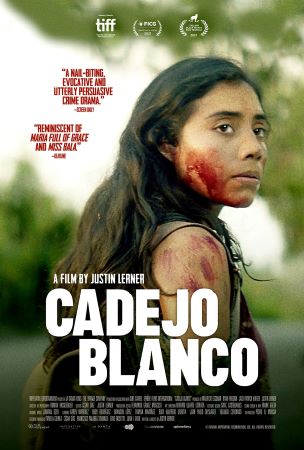
Cadejo Blanco 2021
Distributed by Film Movement
Produced by La Danta Films; Imperative Entertainment; 30 West
Directed by Justin Lerner
Streaming, 125 mins
College - General Adult
Feature Films; Latin American Studies; Social Problems; Sociology; Violence
Date Entered: 11/01/2023
Reviewed by Cindy Badilla-Melendez, University of St. Thomas, St. Paul, MNThe feature film starts with sisters Sarita and Bea going out for the night to a club for Bea to meet her boyfriend. Sarita returns to their place alone and the next morning realizes that Bea didn’t make it home. Sarita asks friends and neighbors if they have seen her sister that day, but no one seems to know Bea’s whereabouts. Sarita and her mother go to the police to report Bea’s disappearance. The police do not seem very interested in pursuing any type of investigation, not an unusual response from Guatemala’s police in a country where women tend to disappear very often and are found dead months or years later. After going to the police and not having any answers, Sarita takes it upon herself to investigate what happened to her sister. She suspects Andrés, Bea’s supposed boyfriend, has something to do with her sister's disappearance. Sarita risks her life to infiltrate the gang's world.
For decades, women have been murdered and still are in Guatemala. The authorities simply do not investigate any of the homicides. A very good documentary about women's violence in Guatemala is the 2007 film Killer’s Paradise. The latter describes the violence against women in Guatemala and the lack of interest from authorities to pursue any investigations. Even though the video is from 2007 the problem still persists, unfortunately. Some organizations have been created to support the family members of the disappeared women. Guatemala has one of the highest number of women disappearances in the world. I would not say that director Lerner created this film specifically to show violence toward women. The film does a good portrayal of women trafficking, violence, and gangs very close to reality, so close that many of the “actors” are real gang members.
The film is advertised as a thriller, but I disagree with that genre. I would classify it more as a violent drama film describing the daily gang violence, women's sex trafficking, and women's crime in Guatemala. The film can be used in different subject areas such as crimes against women, social issues, violence, sociology, Latin American Studies, and more.
Awards:Best Central American Feature, Festival Ícaro; Best Editing, Festival Ícaro; Best Cinematography, Festival Ícaro
Published and licensed under the Creative Commons Attribution 4.0 license. Anyone can use these reviews, so long as they comply with the terms of the license.